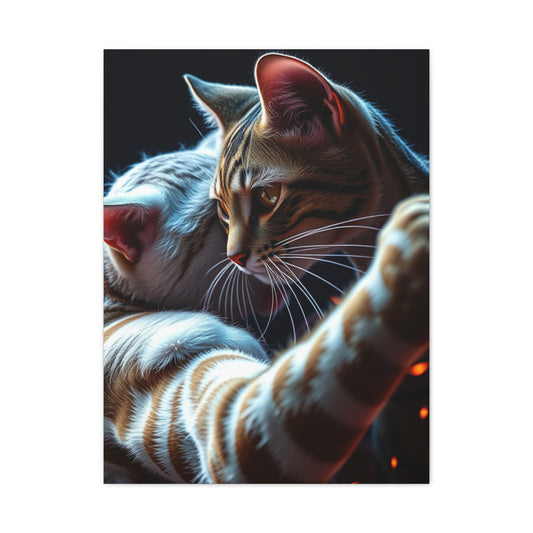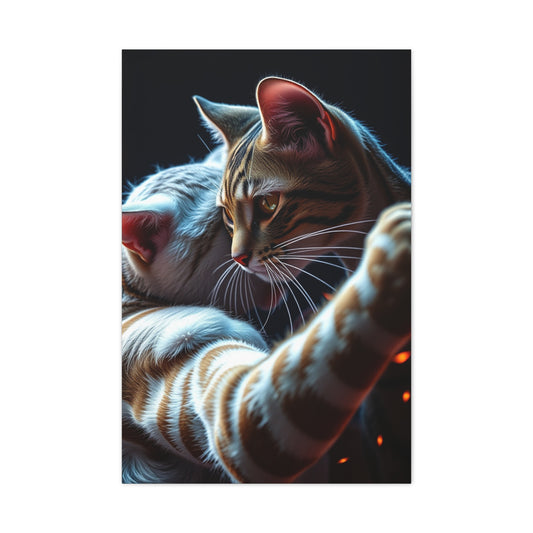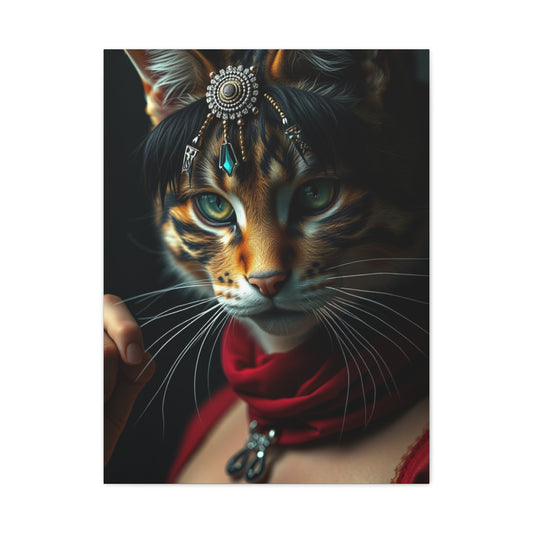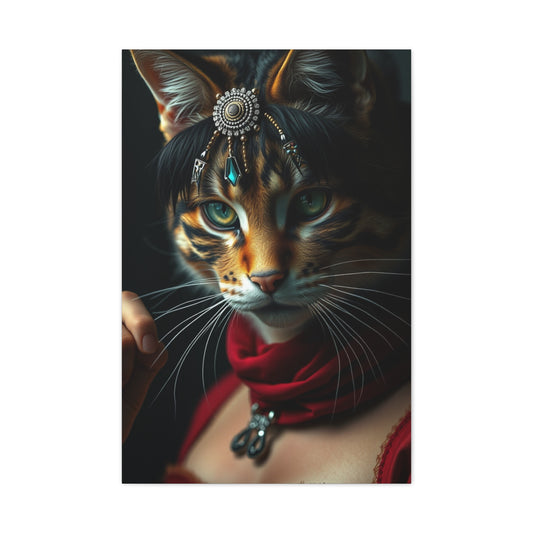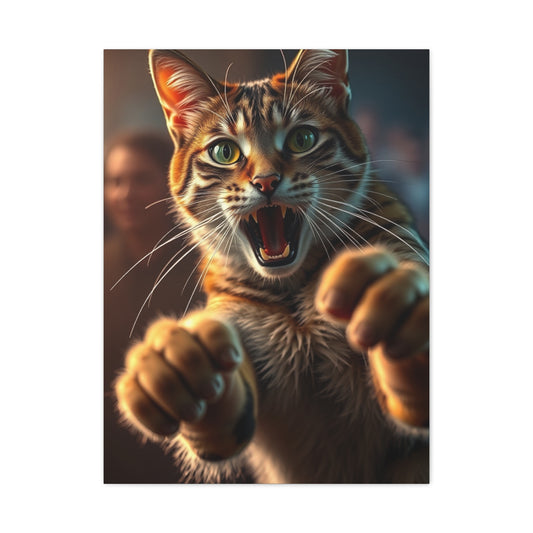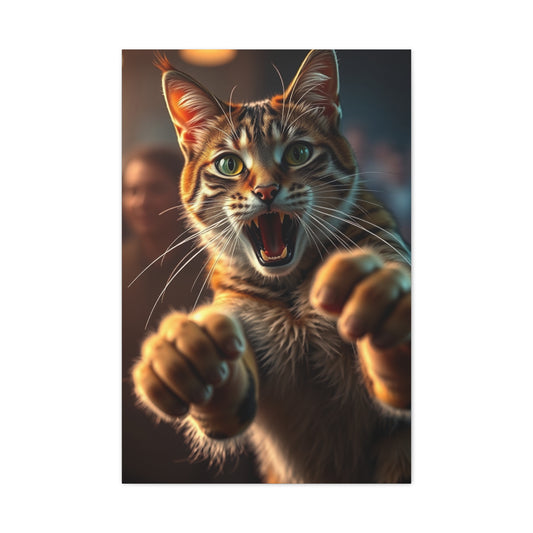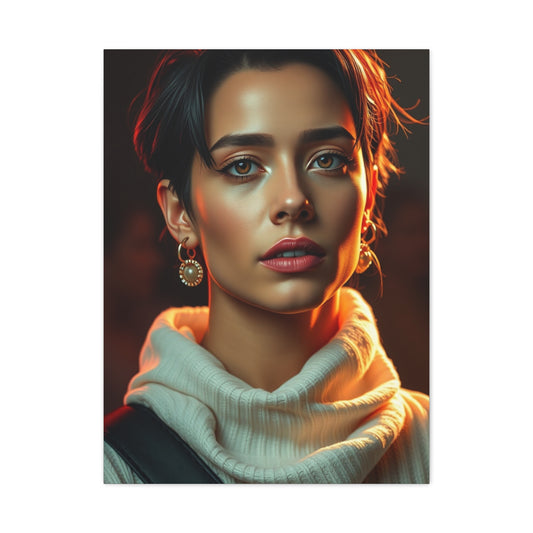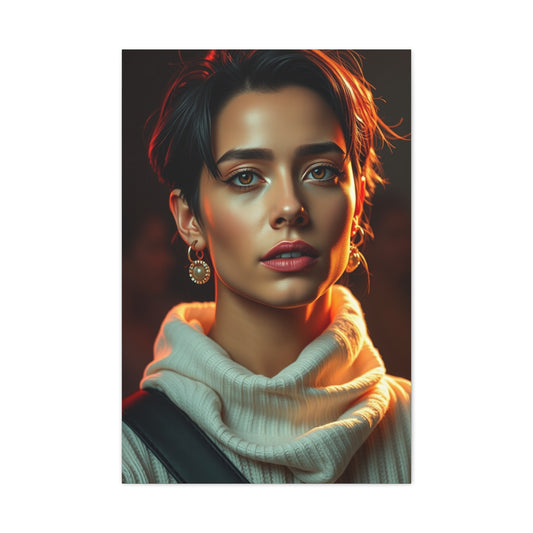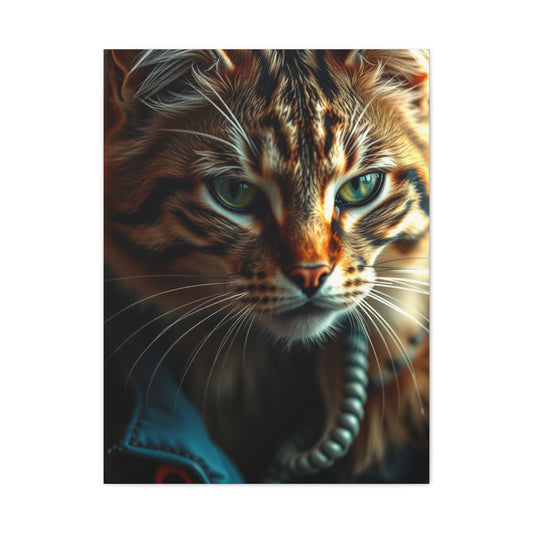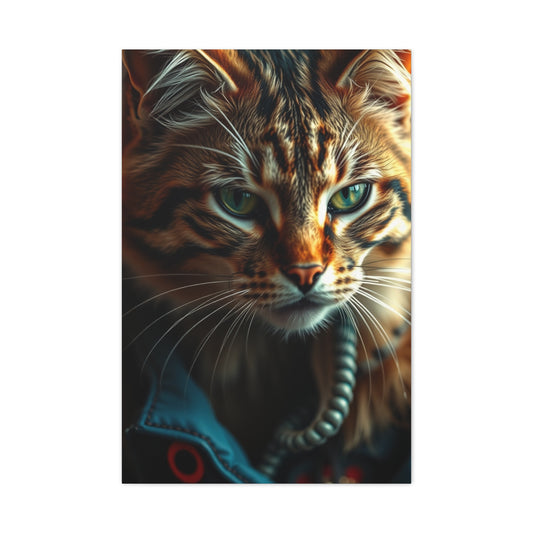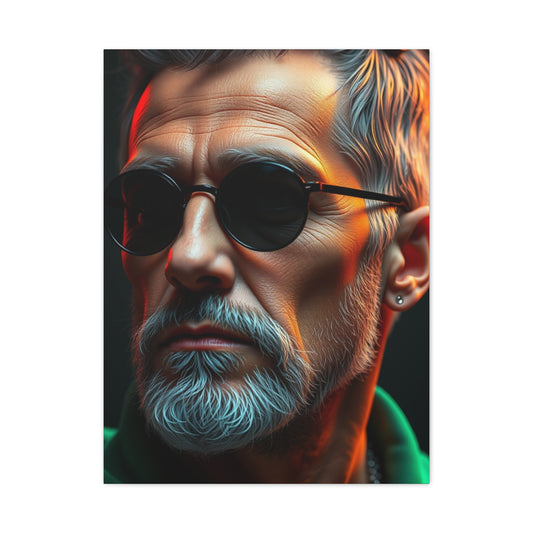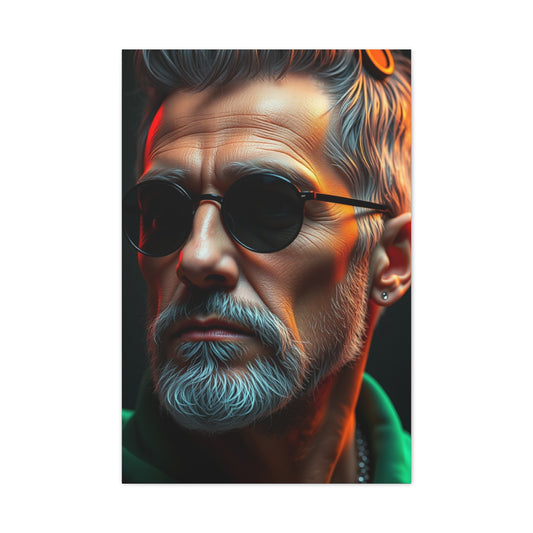Bohemian wall art embodies freedom, individuality, and a connection to nature, transforming interiors into expressive sanctuaries. This guide explores modern and traditional boho techniques, color psychology, textures, and spatial strategies. From statement pieces to layered gallery walls, discover how to curate eclectic, immersive environments where art, mood, and design converge, inspiring creativity and warmth throughout every corner of your home.
Embracing Natural Inspirations in Boho Wall Art
Bohemian wall art thrives on the interplay between nature and interior space. It channels the essence of organic forms, flowing lines, and earthy textures to create environments that feel alive and immersive. Homes adorned with boho art often transport occupants into a world where visual harmony mirrors natural landscapes, and each decorative choice echoes the elegance of untamed environments. This aspect of bohemian aesthetics underscores a deep reverence for flora, fauna, and elemental patterns that transcend conventional interior design. Integrating art inspired by nature cultivates a tranquil yet stimulating atmosphere, evoking feelings of serenity, curiosity, and groundedness.
The natural motif in boho wall art often extends beyond mere visual replication of plants or landscapes. It includes geometric patterns reminiscent of leaf veins, crystalline structures, river meanders, and even the undulating lines of sand dunes. Walls adorned with canvases that capture these intricacies can elevate any room, fostering a seamless dialogue between the indoor environment and the natural world outside. Incorporating earthy tones alongside subtle contrasts ensures the artwork feels simultaneously vibrant and calming, sustaining a sense of holistic balance throughout the space.
Organic Shapes and Curvilinear Designs
Organic shapes are central to bohemian aesthetics, as they emulate the unpredictable yet harmonious forms found in nature. Unlike rigid geometric designs, curvilinear and asymmetrical patterns allow the eye to wander across surfaces, cultivating a sense of flow and continuity. These shapes can be incorporated through large canvas paintings, multi-panel art, or even three-dimensional wall sculptures. The soft contours of organic forms, when paired with natural textures such as jute, bamboo, or reclaimed wood, imbue a room with warmth and tactile appeal.
Curves, spirals, and ellipses are commonly seen in modern bohemian wall pieces. For instance, abstract interpretations of tree rings or concentric stone formations can provide a meditative focus for a room. Similarly, artworks depicting meandering rivers, undulating dunes, or cloudscapes invite viewers into visual journeys that encourage introspection. The placement of these pieces should consider the natural flow of light and spatial rhythm, ensuring the organic shapes harmonize with surrounding furnishings and materials.
|
Related Catagories: |
Botanical and Floral Motifs
Floral and botanical imagery is a hallmark of bohemian-inspired wall art. However, contemporary interpretations often stray from literal representations, favoring stylized abstractions, overlapping textures, and unconventional color palettes. Foliage rendered in muted ochres, deep siennas, and soft moss greens complements earthy interiors, while the occasional pop of cerulean, amber, or amethyst energizes a space without overwhelming it.
Botanical motifs also extend beyond traditional plants to include vines, moss, succulents, and even tropical foliage. Large-scale wall art depicting oversized leaves or intricate floral arrangements can serve as focal points, while smaller, grouped pieces enhance textural layering. Artists often utilize mixed media, combining acrylic, watercolor, and natural pigments to emulate organic depth, giving a subtle tactile dimension to the wall. The juxtaposition of intricate details against smooth or textured backgrounds enhances visual intrigue, making botanical art a versatile element in boho spaces.
Earth-Inspired Color Palettes
A defining characteristic of natural bohemian wall art is its commitment to earthy, muted color palettes. Tones derived from soil, stone, and foliage dominate, with soft beiges, terracotta, clay reds, and forest greens forming the foundational hues. Complementary accents in rust, ochre, mustard, or muted blues elevate visual interest while maintaining the grounded essence of boho interiors.
Layering shades within a single piece can evoke a landscape’s depth or a forest’s canopy, creating immersive experiences that draw viewers into the artwork. Subtle gradients mimic natural transitions in sunlight, shadow, or seasonal changes, while careful color blending reinforces organic authenticity. By adhering to earth-inspired palettes, boho wall art achieves a serene cohesion, allowing it to harmonize with a wide range of natural materials such as stone, wood, rattan, or linen in the surrounding space.
Textural Depth in Wall Art
Texture plays a pivotal role in amplifying the natural aesthetic of bohemian interiors. Artworks incorporating raised patterns, layered paint, or mixed media introduce a tactile dimension that visually enlivens the wall. Canvas surfaces can feature brushstrokes mimicking bark, sand, or water ripples, creating depth and evoking a multisensory experience. Three-dimensional installations using driftwood, woven fibers, or pressed botanicals elevate the textural narrative, inviting viewers to explore surfaces beyond mere visual observation.
Wall art that emphasizes texture can also complement other boho elements in a room, such as pouf ottomans, macrame hangings, or fringed rugs. By pairing textural art with similarly tactile decor, the space exudes warmth and authenticity, reinforcing the relaxed yet intentional ethos of bohemian interiors. This approach encourages experimentation with unusual materials while ensuring cohesion with the overarching natural aesthetic.
Natural Light and Placement Considerations
The impact of nature-inspired wall art is magnified when strategically positioned to interact with natural light. Sunlight enhances organic hues and casts subtle shadows on textured surfaces, amplifying the sense of dimensionality. North-facing rooms or spaces with large windows are ideal for canvases emphasizing soft gradients, intricate patterns, or earthy tones. Similarly, artificial lighting mimicking daylight can highlight key features, bringing subtle details to the fore without overpowering the natural ambiance.
Placement should also consider sightlines and spatial balance. Large botanical canvases may anchor a living area or dining room, while smaller, grouped pieces can enhance transitional spaces or hallways. Ensuring that organic patterns are neither crowded nor lost among furniture encourages the artwork to breathe, reinforcing its naturalistic inspiration.
Nature-Inspired Geometric Art
While freeform organic shapes dominate bohemian aesthetics, geometric patterns rooted in natural forms provide a complementary visual structure. Hexagons, tessellations, and radial symmetry can reference honeycombs, flower petals, or mineral formations. Incorporating these geometries into wall art fosters a subtle dialogue between order and spontaneity, echoing nature’s balance between structure and chaos.
Geometric boho pieces may take the form of painted canvases, wooden wall sculptures, or layered acrylic panels. Muted, natural tones ensure these shapes harmonize with organic textures, while metallic or reflective finishes introduce modernity without diminishing the earthy feel. Such patterns are particularly effective in creating visual anchors or accentuating specific zones within an open-plan layout.
Incorporating Organic Materials
Bohemian wall art is not limited to paint and canvas. Organic materials—such as reclaimed wood, bamboo, jute, woven textiles, and pressed leaves—imbue artwork with an authentic connection to the environment. Driftwood wall hangings, macrame panels, and woven fiber art exemplify how natural components enhance both visual and tactile appeal.
Mixed media compositions that combine pigments, natural fibers, and carved or sculpted elements create multidimensional experiences. These pieces can complement furniture and flooring materials, tying together the broader interior palette. By integrating organic substances, boho wall art maintains a sense of authenticity, emphasizing the ethos of sustainability and reverence for nature.
Seasonal and Environmental Influences
Boho wall art often draws inspiration from seasonal changes and diverse ecosystems. Spring motifs may include blossoms, fresh greenery, and dewdrop textures, while autumnal pieces evoke fallen leaves, acorns, and muted sunsets. Coastal-inspired art can feature sand patterns, ocean waves, and driftwood textures, while mountain landscapes highlight rocky textures, pine silhouettes, and misty valleys.
These influences provide endless opportunities for curating walls that reflect both personal experiences and natural phenomena. Layering artworks from different seasonal or environmental themes fosters visual complexity, allowing a space to tell a dynamic story of nature’s cycles and diversity.
Sustainable and Ethical Materials
A critical aspect of contemporary bohemian interiors is an emphasis on sustainability. Nature-inspired wall art often incorporates eco-friendly pigments, reclaimed materials, and ethically sourced fibers. This approach not only reinforces the aesthetic but aligns with the philosophical principles of mindfulness and environmental stewardship central to boho living.
Artists frequently experiment with biodegradable substrates, organic paints, or recycled canvas materials. Integrating sustainability into wall art encourages a holistic interior approach where visual beauty is coupled with conscious living. Over time, these materials may develop subtle patinas, enhancing the natural, evolving aesthetic intrinsic to bohemian design.
Layering and Gallery Arrangements
Organic bohemian wall art can be amplified through thoughtful layering and curated gallery arrangements. Smaller botanical prints, geometric compositions, and three-dimensional pieces can coexist harmoniously when arranged asymmetrically or in loosely structured grids. The key is to balance variety with cohesion, ensuring each piece contributes to the organic narrative without visual dissonance.
Gallery walls combining textures, colors, and forms emulate natural ecosystems, reflecting complexity, diversity, and interconnectivity. Placement at varying heights or with staggered spacing can simulate the irregular rhythms of nature, inviting viewers to explore and engage with the space dynamically.
Integrating Natural Motifs into Contemporary Interiors
Modern bohemian interiors often fuse natural motifs with contemporary furniture and architecture. Sleek, minimalist furnishings provide contrast against organic wall art, highlighting its textures, patterns, and hues. Light, neutral walls serve as a backdrop, allowing earthy tones, curvilinear forms, and botanical imagery to dominate visual attention.
Blending contemporary elements with nature-inspired boho art encourages a balanced environment where rustic warmth meets modern sophistication. Subtle metallic accents, glass panels, or polished surfaces juxtapose with rough textures, enhancing depth and maintaining a fresh, dynamic aesthetic.
Enhancing Mood Through Nature-Inspired Art
Wall art rooted in natural inspirations can profoundly influence the mood of a room. Botanical and landscape imagery often evoke tranquility, while textured surfaces and layered patterns provide a sense of engagement and intrigue. Organic color schemes promote relaxation, while hints of brighter tones energize and uplift the spirit.
By aligning wall art with natural elements present in the interior, such as wooden flooring, stone accents, or indoor plants, the overall atmosphere becomes cohesive and immersive. This intentional alignment ensures that art does not merely decorate, but contributes actively to the emotional and sensory experience of the space.
Celestial Inspirations in Boho Wall Art
Bohemian interiors often draw upon the mysteries of the cosmos, incorporating celestial imagery that evokes wonder and contemplation. Stars, moons, planets, and constellations are translated into wall art that creates an ethereal ambiance. This approach celebrates the human fascination with the universe while blending seamlessly with organic and earthy boho aesthetics. Celestial motifs offer a sense of expansiveness, contrasting with indoor spaces while simultaneously grounding them through complementary color palettes and textures.
Artists often depict constellations in abstract, fluid forms, using soft metallic or iridescent paints to mimic the glimmer of starlight. Moon phases, sometimes rendered in minimal or layered styles, evoke cycles of growth, renewal, and introspection. By integrating these motifs into wall art, interiors become contemplative sanctuaries that balance energy, serenity, and visual intrigue.
Mystical and Symbolic Imagery
Mystical themes in bohemian wall art extend beyond the cosmos, encompassing symbols associated with spirituality, intuition, and self-reflection. Mandalas, sacred geometry, and esoteric patterns provide structure while inviting mindfulness and meditation. These designs are often intricate, emphasizing symmetry, rhythm, and repetition, while also allowing subtle irregularities that mirror the unpredictable nature of life.
Sacred symbols may include celestial triangles, spiral formations, or interconnected circles. When combined with organic textures and earthy tones, these elements create walls that resonate with both beauty and meaning. The integration of mystical imagery encourages a layered interior, where visual aesthetics and spiritual significance coexist harmoniously.
Abstract Interpretations of Space
Abstract wall art allows bohemian interiors to explore celestial themes without strict realism. Artists employ flowing lines, fragmented shapes, and dynamic brushwork to evoke the sensation of galaxies, nebulae, or cosmic energy. These pieces often balance vibrant contrasts with muted undertones, producing depth and a sense of infinite space.
Abstract interpretations also extend to planetary landscapes, asteroid fields, or ethereal clouds, rendered through unconventional colors or layered textures. Such works engage viewers’ imaginations, prompting contemplation and curiosity. Abstract celestial art is particularly effective in minimalist boho interiors, providing a striking focal point while complementing natural materials and neutral backgrounds.
Integrating Light and Luminosity
Light plays a crucial role in enhancing the effect of celestial-themed wall art. Iridescent paints, metallic foils, or pearlescent finishes can reflect ambient or natural light, creating a subtle shimmer that mimics starlight. Strategically placed spotlights, lanterns, or soft LED strips accentuate key features, enhancing the illusion of depth and movement.
Luminosity also reinforces the mystical quality of the artwork, evoking the ethereal glow of moonlit skies or distant galaxies. By incorporating reflective or glowing elements, celestial wall art becomes immersive, transforming ordinary spaces into otherworldly experiences.
Color Palettes for Celestial Boho Art
Celestial bohemian art often employs a combination of muted and vibrant tones to capture the majesty of the cosmos. Deep indigos, midnight blues, and rich purples evoke the night sky, while metallic golds, silvers, and coppers provide visual accents that suggest stars or planetary shimmer. Complementary earthy tones like warm taupe, dusty rose, or soft beige maintain the organic balance central to boho interiors.
Layering these colors through gradients, washes, or textured overlays enhances the visual complexity of the artwork. For instance, a dark navy background with subtle gold flecks can evoke a star-filled sky, while blended purples and blues suggest nebula-like formations. These palettes maintain harmony with natural textures found in furniture, textiles, or flooring, ensuring the artwork integrates seamlessly with the broader space.
Mystical Materials and Textures
Boho celestial art often incorporates unconventional materials to create dimension and tactility. Metallic foils, mica powders, and reflective resins can simulate starlight or cosmic shimmer, while textured paints, layered fabrics, or pressed natural elements evoke the vastness of space. Multi-layered canvases may combine watercolor washes with acrylic or ink detailing, producing depth and dynamism.
Textured finishes, such as rough-edged resin accents or sand-like layers, further connect the artwork to natural processes and surfaces. This blend of mystical themes with tangible materials encourages a multisensory experience, allowing occupants to feel the celestial energy as well as perceive it visually.
Moon Phases and Cyclical Themes
Depictions of moon phases are particularly popular in mystical boho wall art. From waxing crescents to full moons, these cycles reflect natural rhythms and universal patterns. Artworks may portray lunar sequences as linear panels, circular arrangements, or abstracted arcs, emphasizing the harmony between movement, repetition, and space.
Moon-themed art is often paired with complementary celestial motifs, such as constellations, comets, or ethereal clouds. Using subdued gradients and metallic highlights reinforces a sense of motion and fluidity, making the moon’s progression feel dynamic rather than static. This approach aligns with the bohemian ethos of embracing life’s cycles, impermanence, and natural rhythms.
Stars, Galaxies, and Cosmic Energy
Stars and galaxies provide versatile elements for boho wall art, offering both visual drama and symbolic resonance. Star clusters can be depicted as delicate, scattered flecks, or as dense, radiant constellations. Spiral galaxies rendered in abstract forms create a sense of motion and infinite space.
Artists often employ metallic or reflective pigments to convey the brilliance of celestial bodies, while layering softer tones in the background to suggest cosmic depth. These compositions not only serve as striking visual features but also evoke feelings of wonder, curiosity, and introspection, encouraging contemplation of both the universe and one’s inner landscape.
Mandalas and Celestial Geometry
Mandalas are central to mystical bohemian art, linking the spiritual and the cosmic. When combined with celestial motifs, mandalas can emulate solar systems, orbital paths, or cosmic energy fields. The radial symmetry of mandalas mirrors universal patterns, creating a sense of order amid the infinite expanse.
Celestial mandalas often incorporate layered textures, subtle gradients, and metallic accents to enhance luminosity. Each layer may represent a different aspect of the cosmos, from the terrestrial to the ethereal. This synthesis of geometry and mysticism creates artwork that is both meditative and visually captivating, perfect for enhancing serene interior spaces.
Abstract Interpretations of Astrology
Astrology offers another rich source of inspiration for mystical boho wall art. Zodiac constellations, planetary alignments, or symbolic glyphs can be abstracted into dynamic compositions that balance spiritual significance with aesthetic appeal. Artists often employ minimalistic or fragmented techniques, translating traditional astrological imagery into contemporary, eclectic forms.
Incorporating astrology-inspired art allows interiors to convey personality, narrative, and cosmic connectivity. Paired with ambient lighting or subtle metallic accents, these pieces become immersive focal points, fostering a reflective atmosphere. The resulting environment bridges the celestial and the personal, creating interiors that are simultaneously universal and intimate.
Layering Celestial Elements
Layering is a critical technique in mystical boho wall art, providing depth and narrative complexity. Artists may overlay star maps with abstract textures, geometric shapes with flowing lines, or moon phases with ethereal washes. This approach mirrors the multifaceted nature of the universe, offering viewers multiple points of engagement.
Layered celestial art also complements the eclectic and tactile nature of bohemian interiors. By juxtaposing different materials, textures, and motifs, the wall becomes a dynamic tableau, inviting exploration and reflection. This method reinforces the sense that the artwork is alive, resonant, and in dialogue with both the space and its inhabitants.
Creating a Mystical Atmosphere
Mystical boho wall art shapes the mood of a room through both imagery and materiality. Celestial motifs evoke expansiveness, contemplation, and wonder, while symbolic geometry fosters serenity and mindfulness. Soft metallic glimmers, textured layers, and ethereal gradients cultivate a sense of lightness and tranquility.
In interiors, pairing mystical wall art with ambient lighting, natural textiles, and organic materials enhances this effect. The artwork becomes part of a holistic sensory experience, where visual stimulation and emotional resonance coexist. Each piece contributes to a space that encourages relaxation, introspection, and imaginative exploration.
Modern Interpretations of Celestial Themes
Contemporary bohemian interiors often reinterpret mystical and celestial motifs using minimalism, abstraction, and experimental techniques. Artists may combine traditional cosmic imagery with modern materials like acrylic, resin, or recycled metals. Multi-panel canvases, asymmetrical layouts, and mixed-media compositions offer dynamic visual interest while maintaining the ethereal quality of the celestial theme.
These modern interpretations bridge the gap between the mystical and the aesthetic, allowing interiors to feel both grounded and transcendent. By harmonizing contemporary materials with age-old motifs, boho wall art reflects an evolving design sensibility that celebrates creativity, individuality, and cosmic wonder.
Ethereal and Dreamlike Textures
Dreamlike textures are a hallmark of celestial boho art. Wispy gradients, soft washes, and subtle layering evoke clouds, nebulae, or distant light. Artists may employ glazing techniques, diluted pigments, or semi-transparent overlays to achieve luminosity and depth. These textures enhance the meditative quality of the artwork, drawing the observer into a contemplative state.
Combined with metallic highlights, reflective surfaces, or natural fibers, ethereal textures transform walls into immersive landscapes. The result is a delicate interplay of light, color, and form, reinforcing the mystical and serene nature of the bohemian interior.
Balancing Mysticism with Organic Aesthetics
While celestial and mystical wall art introduces ethereal elements, it remains most effective when balanced with organic and tactile components. Earth-toned textiles, woven materials, and wooden furnishings provide grounding contrasts that prevent interiors from feeling overly abstract or intangible.
This synthesis of the mystical and the natural ensures that bohemian interiors maintain warmth, accessibility, and harmony. Wall art becomes an anchor for exploration rather than a detached spectacle, allowing the observer to engage with both the visual beauty and the symbolic resonance of each piece.
Multi-Panel and Dimensional Layouts
Celestial and mystical wall art benefits from multi-panel or dimensional layouts, which add movement and rhythm to compositions. Panels depicting sequential phases of the moon, abstracted constellations, or layered geometric forms create continuity and a sense of progression.
Dimensional art, such as reliefs, sculptural elements, or layered acrylic, enhances the ethereal effect, making motifs appear to float or shift as the viewer moves through the space. These techniques reinforce the dynamic nature of the cosmos while enriching the tactile and visual experience of the room.
Interpreting Energy and Motion
Boho mystical wall art often conveys energy and motion, reflecting celestial dynamics and natural flow. Curved lines, spirals, and intersecting forms suggest planetary orbits, solar flares, or cosmic currents. Even abstract, non-representational works can capture these rhythms through brushstrokes, layering, and directional emphasis.
In interiors, these artworks foster engagement and curiosity. The sense of movement invites observation and interaction, creating spaces that feel alive, expansive, and continuously evolving. Energy-infused wall art aligns with the bohemian ethos of exploration, freedom, and reverence for the unseen forces shaping our world.
Tribal Patterns and Bohemian Wall Art
Bohemian interiors often draw inspiration from the rich tapestry of tribal and ethnic art forms. These influences infuse walls with rhythm, texture, and symbolism, evoking traditions rooted in diverse cultures across the globe. Geometric motifs, symbolic figures, and repetitive linear patterns are often translated into wall art, celebrating the intricacies of heritage while maintaining a contemporary bohemian sensibility. Tribal wall art introduces a narrative quality, connecting interiors to historical context, cultural identity, and artisanal craftsmanship.
Patterns inspired by African, Native American, Aztec, or South American textiles frequently appear in bohemian interiors. These motifs, when reinterpreted on canvases, tapestries, or wooden panels, retain the essence of their origins while integrating seamlessly with modern design. The repetition, symmetry, and intricate detailing common in tribal motifs contribute to visual rhythm and tactile interest, providing a grounding counterpoint to more fluid or abstract boho elements.
Ethnic Textiles as Wall Art
Textiles from different cultures serve as a powerful medium for boho wall decor. Woven fabrics, embroidered panels, and hand-dyed cloths can be framed, stretched on canvases, or hung as tapestries, transforming walls into vibrant cultural statements. Patterns may include geometric shapes, zigzags, chevrons, or stylized flora, often rendered in earthy hues accented by bold, vivid colors.
The tactile nature of textiles adds dimension to walls, creating interplay between shadow, light, and texture. Using materials such as handwoven cotton, wool, or silk, these pieces bring warmth and authenticity to bohemian interiors. Ethnic textile art encourages eclectic layering, allowing contemporary and traditional elements to coexist harmoniously.
Symbolism and Storytelling
Bohemian tribal wall art frequently incorporates symbolism that communicates stories, values, or spiritual beliefs. Totemic figures, ancestral motifs, or mythological imagery can serve as focal points, inviting reflection and adding narrative depth to interiors. Artworks may depict abstract representations of animals, celestial bodies, or ritualistic symbols, each carrying specific meaning in the source culture.
Integrating symbolic art into boho interiors elevates wall decor beyond aesthetic appeal, transforming it into a conversation between heritage, culture, and personal interpretation. When carefully curated, these pieces enrich the environment with layers of significance, fostering both visual and intellectual engagement.
Geometric and Linear Motifs
Geometric forms are central to many tribal art traditions and translate effectively into bohemian wall decor. Triangles, diamonds, chevrons, and zigzag patterns evoke rhythm and continuity, drawing the eye across a wall while grounding a room in structured repetition. These patterns can be rendered in muted, earthy shades or punctuated with brighter tones for dynamic contrast.
Linear motifs can be abstracted or stylized, lending a contemporary interpretation to traditional tribal designs. Multi-panel arrangements, layered textures, or subtle relief effects create depth, enhancing the interplay between geometric order and organic fluidity. The balance between line, shape, and color allows tribal-inspired wall art to integrate seamlessly with other boho elements.
Handcrafted and Artisanal Techniques
Bohemian interiors embrace artisanal craftsmanship, reflecting a reverence for handmade artistry. Wall art created using traditional techniques—such as hand-painting, block printing, weaving, or embroidery—imbues spaces with authenticity and individuality. The tactile imperfections inherent in handmade work reinforce the organic, human-centered ethos of boho design.
Incorporating artisanal wall art also celebrates cultural preservation. Each piece becomes a tangible connection to its origin, highlighting the skill and creativity of craftspeople while enhancing the aesthetic richness of the interior. Mixed-media compositions combining textiles, paint, and natural fibers can amplify this effect, providing layers of texture and cultural resonance.
Color Palettes in Tribal Boho Art
Color selection is crucial in tribal-inspired wall decor. Earth tones—ochre, terracotta, burnt sienna, moss green, and deep indigo—form the foundation, reflecting natural landscapes and materials. Accent colors such as crimson, turquoise, gold, or magenta introduce vibrancy and highlight symbolic patterns.
Layered coloration techniques, including washes, gradients, and distressed effects, enhance the perception of depth and authenticity. Subtle transitions between muted and bold tones allow wall art to harmonize with surrounding decor while retaining the visual impact of cultural motifs. These color palettes reinforce the organic, eclectic essence of bohemian interiors while honoring traditional aesthetics.
Cultural Fusion and Eclecticism
Bohemian wall art often merges tribal and ethnic influences with contemporary design, resulting in eclectic compositions that feel both global and personal. A single space may juxtapose African-inspired geometric prints with South American woven tapestries, or integrate Asian-inspired motifs with Middle Eastern color schemes. This fusion reflects the wanderlust and curiosity central to bohemian lifestyles, celebrating diversity and storytelling through visual form.
Careful curation ensures that the eclectic mix remains cohesive. Consistent tonal schemes, recurring patterns, or complementary textures help unify disparate cultural influences, creating walls that feel curated rather than chaotic. This approach embodies the boho ethos of individuality while maintaining harmony and balance.
Framing and Display Techniques
The presentation of tribal and ethnic wall art significantly affects its impact. Framing options may include raw wooden frames, minimalistic metal borders, or unframed stretched canvases, each influencing the perception of authenticity and texture. Large tapestries or multi-panel canvases create immersive focal points, while smaller, grouped pieces encourage exploration and visual rhythm.
Display strategies can emphasize layering, asymmetry, or gallery arrangements. Overlapping panels, staggered heights, and varied orientations replicate the organic irregularity found in traditional tribal installations. These methods add movement and depth, enhancing the visual experience while maintaining cultural integrity.
Dimensional and Mixed-Media Approaches
Three-dimensional elements elevate tribal and ethnic wall art beyond flat representation. Carved wood panels, woven baskets, or sculptural reliefs introduce tactile variation, while mixed-media compositions combine textiles, paint, and natural materials. This approach enhances the sensory experience, inviting viewers to engage with the wall art physically as well as visually.
Multi-layered pieces can blend cultural motifs with abstract forms, connecting tradition and innovation. For example, an embroidered textile may be overlaid with metallic ink patterns or painted geometric shapes, creating a dynamic dialogue between old and new. Such dimensional work underscores the boho preference for layered complexity, depth, and individuality.
Storytelling Through Motifs
Tribal and ethnic motifs often convey narratives of origin, community, or spiritual practice. Incorporating storytelling into bohemian wall art deepens the meaning of the decor, transforming it from ornamental to experiential. Repetitive patterns, symbolic figures, or abstracted mythological imagery can allude to history, belief systems, or natural phenomena, providing context and emotional resonance.
Narrative-driven wall art enhances a space’s character, offering layers of interpretation that unfold with time. These motifs encourage reflection, curiosity, and connection, aligning with the bohemian principle of interiors as expressions of personality, memory, and cultural awareness.
Global Inspirations and Wanderlust
Bohemian wall art frequently reflects a spirit of travel and discovery. Motifs from Asia, Africa, the Americas, and Oceania inspire designs that celebrate global artistry. Stylized depictions of tribal masks, ceremonial textiles, or indigenous architecture provide a visual bridge to faraway landscapes and cultural traditions.
By integrating such diverse influences, interiors become curated galleries that embody exploration, adventure, and cultural appreciation. These walls act as both aesthetic statements and reminders of the vast, interconnected world, reinforcing the bohemian ethos of curiosity and eclecticism.
Layering Patterns and Textures
Layering is essential in creating depth and visual interest in tribal and ethnic bohemian wall art. Artists often juxtapose intricate linear patterns with bold geometric shapes, soft textiles with rigid carved surfaces, or vibrant colors with muted backgrounds. This layering echoes natural and cultural complexity, providing a tactile and visual feast for the observer.
Strategic placement of layered elements creates rhythm and hierarchy. Central motifs may dominate, while secondary textures or patterns provide contrast and counterbalance. The result is an environment that feels lively, textured, and culturally resonant, maintaining the boho principle of eclectic harmony.
Ethnic Inspirations in Contemporary Boho
While rooted in tradition, ethnic-inspired wall art is often adapted to modern bohemian interiors. Clean lines, minimal framing, and subtle color adjustments allow tribal motifs to harmonize with contemporary furniture, lighting, and flooring. This approach creates a dialogue between heritage and innovation, preserving cultural authenticity while embracing modern design sensibilities.
Contemporary adaptations may involve simplifying complex motifs, experimenting with unconventional color palettes, or combining multiple cultural references. These reinterpretations maintain the richness of the original patterns while ensuring compatibility with eclectic, free-spirited interiors.
Sustainability in Cultural Wall Art
Sustainability is increasingly relevant in modern bohemian interiors. Many tribal and ethnic-inspired artworks incorporate natural, recycled, or ethically sourced materials, such as handwoven fibers, reclaimed wood, or vegetable-based dyes. This commitment to responsible sourcing reinforces the connection between culture, craft, and environmental consciousness.
Sustainable wall art also highlights artisanal value, emphasizing the skill and labor of craftspeople. Using environmentally conscious materials and techniques ensures that interiors reflect both aesthetic sophistication and ethical consideration, aligning with the boho philosophy of mindful, intentional living.
Arranging Tribal and Ethnic Art
Arrangement techniques play a crucial role in showcasing cultural wall art effectively. Gallery walls, layered groupings, or asymmetrical layouts allow for dynamic presentation without overwhelming the space. Grouping pieces with complementary motifs, tones, or textures creates cohesion, while leaving intentional negative space ensures each artwork can be appreciated individually.
Alternating sizes and orientations enhances movement and rhythm, replicating the fluidity often found in traditional tribal displays. The arrangement becomes part of the narrative, guiding the observer through layers of cultural, visual, and textural experiences.
Incorporating Metal and Natural Accents
Metallic and natural accents amplify the aesthetic of tribal-inspired boho art. Copper, bronze, or gold details can highlight geometric patterns or symbolic motifs, while wooden frames, bamboo panels, and woven textures reinforce authenticity and warmth. These materials create contrast and enhance depth, ensuring the wall art maintains presence and significance within the room.
The integration of metals and natural elements bridges contemporary and traditional influences. Metallic highlights introduce subtle sophistication, while organic textures preserve tactile richness, supporting the layered complexity characteristic of bohemian interiors.
Cultural Narrative Through Color and Form
Color and form in tribal wall art carry narrative weight, often referencing environmental, spiritual, or social contexts. Vibrant hues can represent ritualistic significance, ceremonial occasions, or symbolic energy, while geometric or organic shapes convey stories, hierarchies, or cultural relationships.
Bohemian interiors benefit from the deliberate use of these colors and forms. When thoughtfully combined, they create immersive spaces that communicate cultural depth, aesthetic pleasure, and personal resonance. This approach ensures that wall art transcends decoration, becoming a vessel for heritage, emotion, and storytelling.
Contemporary Approaches to Boho Wall Art
Bohemian wall art continues to evolve, embracing contemporary methods that push creative boundaries while maintaining the free-spirited ethos of boho interiors. Modern techniques explore abstraction, layering, and textural experimentation, resulting in artwork that blends tradition with innovation. These approaches allow artists to reinterpret classic motifs, incorporating unusual materials, new media, and unconventional processes to create dynamic, multidimensional pieces.
Contemporary boho art prioritizes individuality, encouraging experimental designs that challenge conventional perceptions of space and form. The resulting pieces often become focal points within interiors, capturing attention while complementing organic, tribal, or celestial motifs in the broader aesthetic. By integrating modern techniques, bohemian wall art achieves a balance between heritage and forward-thinking artistry.
Mixed Media and Layered Compositions
Mixed media is a hallmark of experimental boho wall art. Artists combine paint, textiles, natural fibers, metals, and found objects to create layered compositions that convey depth and tactile richness. Each layer contributes to the narrative, whether referencing natural textures, cultural motifs, or abstract concepts.
Layered compositions allow for visual exploration, where overlapping patterns, contrasting textures, and color gradients invite close observation. For instance, a canvas may juxtapose rough burlap, smooth acrylic, and metallic ink to mimic the complexity of natural environments or abstracted landscapes. This multidimensional approach transforms flat walls into interactive visual experiences that resonate with bohemian ideals of eclecticism and individuality.
Textural Experimentation
Texture is central to modern boho wall art, offering both visual interest and tactile engagement. Artists explore diverse methods such as impasto, relief carving, weaving, and embossing to create surfaces that interact with light and shadow. Textural experimentation enhances the organic, unpredictable quality of bohemian interiors while amplifying emotional resonance.
Innovative textures may imitate natural phenomena—cracked earth, flowing water, stone striations—or evoke cultural patterns in raised reliefs. The juxtaposition of soft, pliable textures with rigid, structured elements creates dynamic tension, enriching the visual and sensory experience. Textural variation allows wall art to harmonize with eclectic furnishings, textiles, and floor coverings typical of contemporary bohemian interiors.
Geometric Abstraction in Modern Boho
Geometric abstraction has gained prominence in experimental boho wall art, bridging traditional patterns and contemporary aesthetics. Triangles, hexagons, circles, and intersecting lines are reinterpreted in bold, abstract forms, often layered with organic textures or metallic accents. These compositions provide structure within the free-flowing, eclectic environment of boho interiors, balancing spontaneity with precision.
Artists often deconstruct traditional motifs, fragmenting shapes and reassembling them in asymmetrical layouts. This approach creates a sense of motion, depth, and complexity, encouraging viewers to engage visually and intellectually. Geometric abstraction aligns with contemporary boho design by emphasizing experimentation, individuality, and the interplay between order and chaos.
Experimental Color Techniques
Modern bohemian wall art frequently explores unconventional color applications. Artists experiment with gradients, washes, metallics, and iridescent pigments to evoke depth, luminosity, and emotional resonance. Layered or mixed media techniques amplify color dynamics, producing nuanced effects that shift with changing light and perspective.
Color experimentation also involves juxtaposition of muted earthy tones with unexpected vibrancy. For instance, a rust-orange base might be overlaid with turquoise streaks, metallic gold highlights, or deep indigo accents. Such combinations create visual tension while preserving cohesion with the organic and eclectic character of bohemian interiors.
Three-Dimensional Wall Art
Three-dimensional techniques enhance modern boho wall art, extending its presence beyond the flat plane. Sculptural canvases, relief panels, and layered constructions provide depth, texture, and movement, transforming walls into immersive experiences.
Dimensional elements may include carved wood, woven fibers, metallic inserts, or sculpted plaster. Multi-layered or floating panels allow shadows to interact with light, producing subtle shifts in perception throughout the day. These three-dimensional approaches create a dynamic relationship between artwork, interior space, and observer, reinforcing the boho ethos of fluidity and creativity.
Found Objects and Reclaimed Materials
In contemporary boho interiors, artists frequently incorporate found or reclaimed materials into wall art. Driftwood, scrap metal, recycled fabrics, and natural detritus can be transformed into striking visual compositions. This approach emphasizes sustainability while adding character, texture, and a sense of history to each piece.
Using reclaimed or unconventional materials encourages experimentation with form and function. Wall art may combine organic fragments with geometric structures, abstract painting, or sculptural elements, creating works that are both environmentally conscious and aesthetically engaging. This method reflects the bohemian principle of resourcefulness, individuality, and mindful living.
Interactive and Modular Wall Art
Modularity and interactivity have emerged as innovative trends in modern boho wall art. Pieces may be designed as interchangeable panels, movable elements, or components that respond to light and shadow. These dynamic installations encourage occupants to engage actively with their environment, fostering creativity and personalization.
Interactive art may include sliding panels, layered prints, or pieces that can be reconfigured to form new patterns. This flexibility aligns with the bohemian ethos of adaptability, self-expression, and evolving design, allowing interiors to change in response to mood, season, or lifestyle.
Abstract Landscape Interpretations
Abstract landscapes are a contemporary staple in experimental boho art. Artists reinterpret natural scenes—mountains, rivers, forests, deserts—through abstraction, emphasizing form, color, and texture over literal depiction. These interpretations create immersive atmospheres, encouraging viewers to explore emotional, sensory, and conceptual dimensions.
Layered techniques, textural variation, and unconventional color palettes add complexity, making abstract landscapes particularly suitable for large wall spaces or multi-panel installations. By blending abstract representation with tactile surfaces, these artworks bridge the natural and the conceptual, reflecting the expansive, imaginative spirit of bohemian interiors.
Multi-Panel Compositions
Multi-panel wall art is a hallmark of modern boho design, offering flexibility, depth, and narrative potential. Panels may be arranged symmetrically, asymmetrically, or in staggered configurations, creating movement and visual intrigue. Multi-panel compositions allow for sequential storytelling, thematic layering, or exploration of geometric abstraction.
Artists often vary panel size, orientation, and texture to maximize engagement. By connecting individual pieces into cohesive ensembles, multi-panel installations provide opportunities for large-scale expression while maintaining intimacy and detail within each section. This approach reinforces the eclectic and layered aesthetic central to bohemian interiors.
Light and Shadow Play
Modern bohemian wall art frequently engages with light to enhance visual impact. Layered textures, reflective surfaces, and dimensional elements interact with natural or artificial illumination, creating shifting shadows and highlights. This interplay introduces dynamism, reinforcing the sense of motion, energy, and depth in the artwork.
Strategically placed lighting accentuates metallic pigments, translucent layers, or textured surfaces, creating subtle visual drama. The resulting variations in perception enhance the immersive quality of experimental boho art, transforming static walls into living, responsive environments.
Fluidity and Motion in Design
Movement and fluidity are recurring principles in experimental boho wall art. Artists often employ sweeping brushstrokes, spirals, curves, and overlapping shapes to suggest rhythm and continuous motion. This approach mirrors the free-flowing nature of bohemian interiors, encouraging exploration, visual wandering, and emotional engagement.
Fluid compositions complement other eclectic elements, such as patterned textiles, organic furniture forms, and layered rugs. By emphasizing dynamism, motion-oriented wall art reinforces the boho ideal of interiors as living, evolving spaces rather than static environments.
Organic Abstraction
Organic abstraction is a defining feature of modern boho wall art. Artists abstract natural forms—leaves, waves, landscapes, celestial patterns—into flowing, interpretive compositions that blend realism and imagination. This method emphasizes mood, texture, and color, producing evocative, immersive pieces.
Organic abstraction allows bohemian interiors to balance structure and spontaneity, harmonizing geometric motifs, tribal patterns, or minimalist furniture with expressive wall art. The resulting spaces feel alive, layered, and contemplative, reflecting the creative, non-conformist ethos of bohemian living.
Experimental Use of Metallics
Metallic accents, including gold, bronze, copper, and silver, are increasingly prevalent in modern boho wall art. These materials catch light, enhance texture, and introduce visual contrast, elevating otherwise muted or earthy compositions. Metallics may appear as foils, paint layers, inlaid strips, or reflective embellishments.
By integrating metallic elements with organic or abstract forms, artists create dynamic tension, movement, and depth. The interplay of reflective surfaces and textured backgrounds adds sophistication while preserving the free-spirited, eclectic character of bohemian interiors.
Multi-Sensory Wall Art
Experimental boho wall art increasingly engages multiple senses. Artists incorporate tactile surfaces, subtle sound elements, and interactive components, encouraging occupants to experience walls beyond sight alone. Textures, layers, and varying materials create touchable surfaces, while kinetic or responsive installations offer gentle movement or auditory cues.
|
Related Catagories: |
This multi-sensory approach aligns with bohemian ideals of immersive, dynamic environments. Walls become interactive experiences, fostering curiosity, mindfulness, and engagement with space, and transforming interiors into personalized, living art galleries.
Sculptural and Relief Techniques
Sculptural and relief-based techniques are central to experimental boho wall art. Raised surfaces, carved panels, and layered construction create visual depth and dimension. Relief work allows for intricate patterning, geometric abstraction, or organic mimicry, adding tactile richness and shadow play.
Three-dimensional elements bridge the gap between painting, sculpture, and installation, reinforcing the eclectic, layered aesthetic of contemporary bohemian interiors. By combining multiple techniques—paint, carving, mixed media—artists produce works that are visually striking and materially complex, enhancing sensory engagement.
Large-Scale and Oversized Art
Large-scale wall art is particularly effective in modern boho interiors. Oversized canvases, panels, or mixed-media installations dominate walls, establishing dramatic focal points while accommodating layered textures, abstract motifs, and dimensional elements.
Scale allows for bold experimentation with color, pattern, and form, while creating immersive experiences. Large compositions integrate naturally with open-plan spaces, high ceilings, or expansive walls, emphasizing the eclectic, free-flowing spirit characteristic of bohemian design.
Personalization and Customization
Experimental boho wall art often emphasizes personal expression. Artists and homeowners can tailor compositions, color palettes, materials, and forms to reflect individual style, lifestyle, and environment. Customization ensures interiors are unique, fostering emotional connection and authenticity.
This personalized approach aligns with bohemian values of creativity, exploration, and individuality. Each wall becomes a canvas for self-expression, combining traditional influences, modern experimentation, and imaginative interpretation to craft spaces that are vibrant, eclectic, and deeply personal.
The Psychological Impact of Color in Boho Interiors
Color has a profound influence on human emotion, perception, and behavior, making it central to the design of bohemian interiors. Boho wall art strategically employs color to evoke mood, energy, and ambiance, reflecting the free-spirited ethos of the style. Earthy tones like ochre, terracotta, sage, and sandy beige create warmth, grounding, and a sense of calm. In contrast, vibrant hues such as turquoise, magenta, or sunflower yellow energize spaces and inspire creativity.
Understanding the psychological effects of color allows for intentional curation. Deep indigos and purples promote introspection, while soft pastels encourage relaxation and openness. The interplay between muted bases and bold accents is characteristic of boho design, generating balance and layered visual experiences. Through thoughtful use of color, wall art can transform interiors into immersive, emotionally resonant environments.
Layering Warm and Cool Tones
Bohemian interiors frequently combine warm and cool tones to create dynamic contrasts and harmonious tension. Warm tones—burnt orange, rust, mustard—introduce vitality and coziness, while cool tones—seafoam, teal, lavender—promote tranquility and spaciousness. Wall art that skillfully layers these shades fosters a multidimensional experience, balancing energy with serenity.
Techniques such as glazing, gradient washes, and blended pigments enhance transitions between warm and cool colors. Layering subtle variations encourages depth and complexity, transforming flat surfaces into visually engaging compositions. This approach aligns with the eclectic, textured nature of boho interiors, emphasizing mood, atmosphere, and personal expression.
Earthy Hues and Organic Sensibility
Earthy hues are foundational in bohemian wall art, reflecting natural landscapes, organic materials, and tactile textures. Browns, ochres, terracottas, and muted greens evoke soil, wood, stone, and foliage, creating a sense of connection to nature. These colors produce grounding effects, reducing visual tension and encouraging relaxation.
Earth tones also provide a neutral yet rich backdrop, allowing patterns, textures, and accent colors to stand out without overwhelming the senses. Their versatility makes them ideal for layering with tribal, celestial, or abstract motifs, ensuring cohesion across diverse wall art styles.
Vibrancy and Emotional Expression
Boho interiors celebrate individuality and emotional expression through bold, vibrant colors. Intense reds, electric blues, golden yellows, and magentas can invigorate a room, stimulating creativity and energy. Wall art leveraging these hues often becomes a focal point, commanding attention while balancing other interior elements.
Vibrancy in boho art is typically tempered by complementary earthy or muted tones to prevent visual overload. The contrast between dynamic colors and subdued backgrounds enhances depth, rhythm, and visual storytelling, allowing the artwork to influence both mood and spatial perception.
Pastels and Tranquility
Soft pastels offer a subtler approach to mood modulation, introducing calm, openness, and gentle energy into bohemian interiors. Blush pinks, sky blues, lavender, and mint green are commonly employed in wall art to create serene, contemplative atmospheres. Pastels work particularly well in spaces intended for relaxation, meditation, or creative reflection.
Pastel tones can be layered with textured materials, metallic highlights, or subtle gradients to maintain visual interest without overpowering the room. This combination enhances the tactile and emotional impact of the art, producing walls that are both soothing and engaging.
Gradient and Ombre Techniques
Gradients and ombre effects are increasingly popular in boho wall art, providing a fluid, immersive color experience. By transitioning smoothly from one shade to another, these techniques create a sense of depth, movement, and temporal change. Gradients can mimic natural phenomena such as sunsets, ocean waves, or sky transitions, aligning with bohemian themes of organic flow and rhythm.
Ombre applications are effective in multi-panel artworks, abstract landscapes, or large-scale installations. Gradual shifts in tone guide the viewer’s gaze across the composition, fostering engagement and contemplation. This technique enhances the emotional resonance of color, amplifying its psychological impact within the space.
Complementary Color Pairings
Boho interiors thrive on eclectic combinations of complementary colors, which enhance visual energy and psychological stimulation. Pairing opposites—such as teal with burnt orange, magenta with olive green, or indigo with gold—creates contrast, emphasis, and dynamic balance. Wall art employing complementary palettes becomes a catalyst for attention, drawing the observer toward focal points.
Careful consideration of scale, placement, and intensity ensures that contrasting colors enhance harmony rather than creating dissonance. In bohemian contexts, this approach fosters playful exploration of color while maintaining an organic, layered aesthetic.
Symbolic Color Use
In addition to emotional effects, colors in boho wall art often carry symbolic meaning. Gold can signify abundance or illumination, green represents growth and renewal, blue evokes introspection and spiritual depth, while red suggests passion and vitality. Understanding the symbolism behind color allows for deliberate curation, infusing interiors with layered narrative and meaning.
Symbolic color application enhances the storytelling potential of wall art. Viewers engage not only visually but also psychologically, connecting with the intended mood, energy, or thematic resonance embedded in the composition. This dual impact strengthens the immersive quality of bohemian interiors.
Mood-Centric Art Installations
Wall art in boho interiors often serves as a mood anchor, influencing the overall atmosphere of a room. Large-scale abstract pieces, multi-panel canvases, or textural installations can define energy, tranquility, or contemplation depending on color, form, and composition.
Mood-centric installations allow inhabitants to curate spaces that respond to personal needs and lifestyle. For example, a bedroom may feature soft pastels and flowing textures to foster restfulness, while a creative studio may employ vibrant, energetic color schemes to stimulate imagination. Thoughtful wall art selection amplifies emotional impact while maintaining aesthetic cohesion.
Interactive and Perceptual Effects
Certain bohemian artworks leverage optical or perceptual effects to engage emotion and attention. Techniques such as layered transparencies, reflective pigments, or textured surfaces interact with light, producing subtle changes in appearance throughout the day. These effects heighten engagement, evoke wonder, and influence perception, reinforcing the psychological impact of color and form.
Interactive perception allows the observer to experience art as evolving rather than static. This aligns with bohemian ideals of fluidity, individuality, and connection to natural rhythms. Walls transform into responsive environments that stimulate both visual and emotional senses.
Color Blocking and Bold Statements
Color blocking is a striking technique in modern boho wall art, using large areas of solid hues to create graphic impact. Contrasting blocks of warm and cool tones, muted and vibrant shades, or complementary colors introduce rhythm and focal points.
This method is particularly effective in contemporary interiors with minimalist furniture, open layouts, or neutral backdrops. Color blocks provide visual interest without clutter, enabling walls to assert presence while maintaining a cohesive, balanced aesthetic.
Emotional Layering Through Color
Bohemian wall art often combines multiple color schemes within a single piece to create emotional layering. Subtle gradations, transparent overlays, or juxtaposed hues evoke complex moods, balancing energy, calm, warmth, and introspection.
Layered color applications mirror the eclectic nature of boho interiors, where textiles, furniture, and decorative objects interplay in dynamic, unstructured arrangements. Emotional layering allows wall art to reflect both personal expression and environmental harmony, producing immersive, psychologically engaging interiors.
Natural Color Inspirations
Many boho wall art palettes draw from natural landscapes, flora, and geological formations. Forest greens, sandy ochres, rust reds, ocean blues, and sunset purples evoke the sensory and emotional qualities of nature. These palettes promote connection, calm, and restorative effects within interiors.
By translating organic hues into abstract or representational compositions, artists create walls that resonate psychologically with occupants. The natural inspiration reinforces the bohemian principle of aligning interiors with external environments and universal patterns.
Seasonal and Temporal Influences
Boho wall art can also reflect seasonal or temporal changes, using color to evoke warmth, freshness, or transition. Autumnal tones such as burnt sienna and amber provide coziness, while spring-inspired pastels promote renewal and lightness. Summer hues like turquoise, coral, and sunflower yellow energize spaces, and winter shades of deep blue, grey, and muted white encourage introspection.
Seasonal color considerations allow interiors to evolve alongside natural cycles, enhancing psychological resonance and maintaining alignment with organic bohemian principles. Walls become dynamic entities, sensitive to time, mood, and environment.
Calming Versus Stimulating Effects
Color in boho wall art can be deliberately tuned to calm or stimulate occupants. Cool, muted tones, soft gradients, and harmonious layering promote relaxation, meditation, and reflection. Bold, contrasting shades, saturated accents, and high-intensity patterns energize, inspire, and draw focus.
Understanding these effects supports intentional curation, ensuring that wall art contributes to the functional and emotional objectives of the space. Bedrooms, meditation corners, or study areas benefit from calming palettes, whereas living rooms, creative studios, or communal spaces may thrive with stimulating hues.
Contrast and Depth
Contrast is a critical tool for creating psychological impact in bohemian wall art. Light and dark tones, warm and cool hues, or textured versus smooth surfaces generate depth, focus, and visual hierarchy. Effective use of contrast allows key motifs to stand out while supporting layered, eclectic compositions.
Depth achieved through contrast enhances perception, making interiors feel larger, more engaging, and psychologically nuanced. Wall art thus functions as both a visual anchor and a mechanism for influencing spatial experience.
Color as Narrative
Boho wall art often uses color to tell stories, evoke memories, or convey emotional journeys. Sequential panels, gradient shifts, or symbolic palettes transform walls into narrative landscapes. Observers may interpret the emotional or temporal journey, creating personal resonance and cognitive engagement.
Narrative-driven color design aligns with bohemian values of self-expression, exploration, and eclecticism. Walls become living stories, capable of adapting meaning and impact according to individual perspective and context.
Harmonizing Color with Material
Color interacts with material to influence perception and mood. Matte, textured, or fibrous surfaces soften hues, enhancing warmth and approachability. Reflective, metallic, or glazed materials intensify brightness and visual impact. The careful combination of color and material allows wall art to balance emotion, energy, and environmental integration.
Material-conscious color application ensures that wall art aligns with the broader sensory and aesthetic qualities of bohemian interiors. This synthesis of hue, texture, and form strengthens the immersive and psychologically attuned nature of the space.
Spatial Planning for Boho Wall Art
The placement of bohemian wall art is crucial to the success of an interior. Unlike rigidly structured styles, boho interiors thrive on eclectic arrangements that feel organic and intentional simultaneously. Consider the scale of your walls, ceiling height, and room function when determining placement. Large walls can accommodate oversized canvases, multi-panel displays, or layered mixed-media compositions. Smaller walls benefit from curated groupings, asymmetrical arrangements, or single statement pieces that balance with surrounding furniture and decor.
Understanding spatial dynamics ensures that wall art complements rather than competes with other design elements. Wall pieces should interact with furniture, textiles, and lighting to enhance depth, rhythm, and flow. Bohemian interiors often employ asymmetry and varied heights, creating a sense of movement and visual intrigue while maintaining coherence.
Gallery Walls in Bohemian Interiors
Gallery walls are a quintessential boho strategy for maximizing visual interest. These curated clusters allow multiple artworks to coexist harmoniously, combining framed prints, tapestries, textiles, and sculptural elements. The key to successful gallery walls is balance: vary frame sizes, materials, and textures while maintaining a cohesive color palette or theme.
Asymmetrical arrangements are particularly effective, emphasizing the organic, collected-over-time quality of bohemian interiors. Negative space plays a critical role, preventing the display from feeling cluttered while highlighting individual pieces. This approach creates a dynamic visual narrative, encouraging exploration and engagement with the art.
Layering and Overlapping Artworks
Layering and overlapping are essential strategies for creating depth in boho wall art displays. Position smaller pieces in front of larger canvases, or partially overlay tapestries and panels to generate dimension. This technique replicates the eclectic, collected aesthetic central to bohemian design, emphasizing texture, pattern, and scale variety.
Layering also allows for thematic or color-based cohesion across diverse pieces. Groupings can combine tribal, abstract, and natural motifs, producing walls that feel curated but spontaneous. Thoughtful layering enhances spatial depth, inviting viewers to experience multiple layers of meaning, texture, and visual interest simultaneously.
Multi-Panel and Modular Arrangements
Multi-panel and modular compositions offer flexibility and adaptability in boho interiors. Panels can be arranged symmetrically, staggered, or in unconventional layouts, transforming walls into dynamic visual experiences. This approach accommodates abstract landscapes, geometric patterns, or mixed-media creations, allowing for expansion or rearrangement over time.
The modularity of these arrangements encourages personalization and experimentation. Occupants can adjust spacing, sequence, or orientation to suit mood, season, or functional changes, maintaining a sense of freshness and continual evolution in the interior. Multi-panel installations are particularly effective on large walls, providing a dramatic focal point while enhancing the layered, eclectic character of the space.
Vertical and Horizontal Balance
Achieving vertical and horizontal balance is essential when integrating boho wall art into interiors. Tall, narrow panels or elongated tapestries complement high ceilings, drawing the eye upward and accentuating vertical space. Conversely, wide horizontal arrangements stabilize low or wide walls, creating a sense of grounding and cohesion.
Combining vertical and horizontal elements in a single wall display can generate rhythm and visual flow. For instance, a large horizontal canvas flanked by vertical mixed-media panels creates contrast while unifying the composition. Balancing orientations ensures that wall art enhances spatial perception rather than overwhelming or underutilizing the area.
Corner and Niche Displays
Corners and architectural niches offer untapped opportunities for bohemian wall art. Smaller tapestries, layered panels, or sculptural elements can transform otherwise overlooked areas into intimate, visually engaging zones. Utilizing corners encourages immersive experiences, with artworks enveloping viewers and reinforcing the eclectic, cozy atmosphere characteristic of boho interiors.
Niches allow for dimensional displays, combining wall art with natural objects, plants, or ambient lighting. This approach creates micro-environments that harmonize with the broader interior, adding intrigue, texture, and sensory richness to transitional or secondary spaces.
Focal Points and Anchoring Pieces
Large, statement-making pieces serve as anchors in boho interiors, establishing focal points that organize surrounding visual elements. Oversized canvases, vibrant mixed-media panels, or textured tapestries provide scale and presence, guiding the eye and grounding the composition.
Anchor pieces often dictate color schemes, patterns, or thematic direction for secondary artworks. Their placement should consider sightlines, furniture arrangement, and natural lighting to maximize impact. Focal points maintain coherence in eclectic interiors, ensuring that the free-spirited arrangement of multiple pieces does not feel disorganized.
Integrating Furniture and Wall Art
Bohemian interiors prioritize harmony between wall art and furniture. Low-profile sofas, wooden consoles, woven seating, and eclectic shelving can complement or frame artworks, creating layered spatial narratives. Furniture may act as visual support, providing contrast, height variation, or textural interplay that enhances wall displays.
Consider proportional relationships: large artworks suit expansive furniture pieces, while smaller artworks balance with compact or delicate furnishings. The interplay between vertical, horizontal, and three-dimensional elements creates a dynamic spatial dialogue, reinforcing the immersive quality of boho interiors.
Height Variations and Eye Level
Strategic placement at varying heights prevents monotony and emphasizes individual pieces. Eye-level positioning remains standard for primary artworks, ensuring comfort and accessibility. Secondary elements can be positioned higher, lower, or in staggered arrangements, encouraging exploration and layered visual engagement.
Varying heights also accommodate multi-panel, modular, or sculptural pieces, creating rhythm and tension. Thoughtful vertical distribution enhances the boho ethos of spontaneity, eclecticism, and visual discovery, allowing each piece to maintain individuality while contributing to collective harmony.
Light and Wall Art Interaction
Lighting is critical in showcasing boho wall art. Natural light highlights textures, colors, and reflective elements, while artificial lighting can accentuate dimensionality, metallic accents, or layered surfaces. Adjustable spotlights, sconces, or pendant lighting allow for targeted emphasis, enhancing mood and depth.
Consider how light interacts with textures such as woven fibers, impasto painting, or metallic surfaces. Shadows and reflections add dynamic variability, making wall art responsive to time of day and atmospheric conditions. The integration of lighting elevates the psychological and spatial impact of bohemian wall decor.
Textural Juxtaposition with Surroundings
Boho wall art benefits from textural interplay with surrounding surfaces. Rough plaster walls, exposed brick, or wooden panels provide contrast to smooth canvases or woven tapestries. Conversely, complementary textures reinforce tactile cohesion, layering textiles, fibers, and natural materials in alignment with bohemian principles.
This juxtaposition enhances both spatial and sensory experience, making walls feel multidimensional and alive. By engaging touch, sight, and spatial perception, textural contrast contributes to immersive environments that evoke curiosity, warmth, and organic harmony.
Asymmetry and Organic Flow
Asymmetrical arrangements epitomize the boho approach to wall art placement. Irregular spacing, varied framing, and staggered alignment create organic flow, mimicking natural patterns and collected aesthetics. This approach encourages discovery, guiding viewers through a visual journey rather than presenting static uniformity.
Organic flow also supports layering of textures, colors, and motifs. Wall art can combine abstract, tribal, and natural elements seamlessly, creating depth and cohesion without rigid symmetry. Asymmetry emphasizes individuality, spontaneity, and dynamic composition, reinforcing the eclectic identity of bohemian interiors.
Layering with Functional Elements
Functional elements such as shelves, hooks, or hanging planters can integrate with wall art, blending utility and aesthetics. Floating shelves support small sculptures, candles, or plants that complement larger wall pieces. Hooks or rods allow textiles, macrame, or mixed-media panels to be suspended, adding vertical interest and versatility.
Integrating function with decoration maintains spatial efficiency while enhancing visual complexity. Functional layering encourages interaction with the environment, allowing inhabitants to curate displays that evolve over time without compromising bohemian character.
Floor-to-Ceiling Integration
Floor-to-ceiling wall art creates immersive environments, particularly in rooms with high ceilings or open layouts. Large tapestries, multi-panel compositions, or sculptural installations can dominate vertical space, establishing dramatic focal points and enveloping viewers.
This approach emphasizes scale, proportion, and rhythm, supporting the layered, eclectic nature of boho interiors. Floor-to-ceiling integration allows visual continuity from furniture and textiles to wall surfaces, creating a unified, immersive spatial experience.
Corner-to-Center Visual Pathways
Designing visual pathways from corners to central wall areas enhances flow and perception. Placing smaller pieces near corners and leading toward larger central artworks encourages movement and exploration. This strategy transforms walls into journeys rather than static displays, emphasizing depth, scale, and spatial rhythm.
Pathway-based layouts also facilitate multi-layered storytelling, guiding viewers through patterns, textures, and color narratives. By controlling visual flow, wall art becomes both functional and expressive, aligning with bohemian principles of interaction and eclectic coherence.
Combining Natural Elements
Bohemian interiors often integrate natural elements alongside wall art. Hanging plants, driftwood, or stone fragments can complement or frame artworks, enhancing texture, color, and sensory richness. These elements strengthen the connection between interior and exterior environments, reinforcing boho values of organic harmony and tactile engagement.
Natural integration also introduces rhythm and variability, encouraging exploration and layered perception. The juxtaposition of living materials with static artworks enhances depth, movement, and emotional resonance within the interior.
Multi-Layered Narratives
Layered narratives in boho wall art arrangements allow for visual storytelling that unfolds over time. Combining different scales, motifs, and textures creates walls that evolve with perspective, mood, and lighting conditions. Observers can engage with individual pieces while perceiving overarching thematic connections.
Narrative layering encourages immersive experiences, transforming walls into living galleries. The approach aligns with bohemian ideals of individuality, personal expression, and eclecticism, fostering spaces that are emotionally and aesthetically compelling.
Seasonal Rotation and Flexibility
Boho wall art benefits from seasonal rotation and flexible arrangements. Exchanging textiles, panels, or mixed-media pieces according to season, light, or mood maintains novelty and engagement. Flexible installation systems, modular layouts, and movable panels support this dynamic approach, allowing interiors to evolve organically over time.
Seasonal adaptability reflects the bohemian ethos of impermanence, exploration, and personal curation. Walls become living, responsive environments rather than static decorative backdrops, enhancing both psychological and aesthetic engagement.
Integration with Lighting and Spatial Geometry
Finally, wall art placement should consider room geometry and lighting patterns. Architectural features such as alcoves, beams, or vaulted ceilings offer opportunities for accentuating artworks. Aligning pieces with natural sightlines, light trajectories, and furniture arrangements enhances impact, creating spaces that feel intentional, immersive, and harmonious.
By harmonizing wall art with spatial geometry and illumination, bohemian interiors achieve cohesion despite eclecticism. The result is a layered, dynamic environment where art, architecture, and inhabitant experience converge seamlessly.
Conclusion
Boho wall art is more than decoration; it is an expression of personality, creativity, and emotional resonance. By embracing diverse techniques, textures, and colors, it transforms ordinary walls into dynamic narratives that reflect individuality and a connection to natural and cultural influences. Layering mixed media, experimenting with geometric abstraction, and strategically arranging panels and gallery walls allow interiors to feel eclectic yet harmonious. Thoughtful color choices influence mood, while integration with furniture, lighting, and spatial geometry enhances depth and cohesion. Seasonal rotations, modular arrangements, and interactive elements ensure that the space remains vibrant, adaptable, and engaging over time. From earthy neutrals to vibrant hues, oversized canvases to intimate tapestries, boho wall art combines visual storytelling with sensory exploration. Ultimately, these creative approaches cultivate interiors that are immersive, balanced, and deeply personal, offering both aesthetic beauty and emotional fulfillment.













